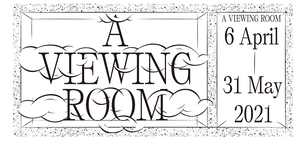Taey Iohe’s autofictive A great circle with no rim (2021) expresses the intersectional* embodiment of the migrant, gendered, and queer in the public space during the pandemic in the UK. A body departed, but yet to arrive, neither in step nor in sync. The non-binary body has always to be vigilant; the foreign body is perceived as unwanted contagion.
The title references Denise Riley’s 2012 essay, “Time Lived, Without Its Flow,” where she explored grief after the death of her son. The expansive ‘circle’ suggests at once the altered experience of stopped time after devastating loss, and the abyss of non-existence beyond. Iohe’s film alludes to how current living conditions with institutional closures, social distancing, and hyper-digitised working conditions, simulate a similar cyclical, suspended sense of time.
Connecting these complex personal and social conditions, Iohe intertwines her writing, art-making and running as aesthetic and critical practices in engaging the unwelcoming exterior with their own internal ambivalence. The film pairs intimate shots of the moving pen, with the runner’s slow circuit around the park. Tracing a direct inscription from the mental landscape to the paper, Iohe visualises her movement with dots across a sheet of paper, linking the dab to rice to the circle to steps - mapping the psychosocial, poetic, and political spheres of the discomfited agent. Iohe’s habitual gestures conflate how all writing begins with the desire to score the distance between points, and how running articulates the craving of the body to contour its interiority to its environs. Writing and running are both disciplines that require determination to reclaim public space - where it might currently be considered perilous to do so as an Asian queer migrant in the era of the double pandemic* - where the second virus of racism was fuelled in the aftermath of Brexit and the Home Office’s ongoing hostile environment policy that has spiked the rise of xenophobia against immigrants; and the surge of Anti-Asian violence worldwide after the racialisation of the Coronavirus.
Iohe expresses their urge towards the relational dialogics, where the post-illness and injury critical body must seek alternative networks of kinship and care. The poem is voice-narrated by Olu Niyi-Awosusi, a London-based black, queer writer, and Haein Kim, an international student now relocated back to Seoul, also Iohe’s place of birth. The running body in the film becomes a liminal site in flux, vocalised by multiple registers of socio-cultural histories.
This collaborative sensibility reflects Iohe’s broader practice that seeks to enable communal knowledge building and care. As a cultural organiser she has founded collectives, and been involved in various London-based groups and networks such as the Feminist Duration Reading Group, and Asia-Art-Activism. This intensive collectivising may seem compensatory for earlier years of experienced alienation, but is now coalesced around feminist politics of nurturning inter-community solidarity. Speaking of her newly instigated running collective, Critical Point Run, Iohe references the mathematical notion where one might seem to be unmoving, but at a crucial juncture, there is a sudden ascension to a different level. The film expresses an awareness of this moment of potentiality - with its wistful pan up to ‘circle of trees’ framing the sky, and the pen’s ever-expanding circle - to suggest the freefall delimitations of a reimagined, co-created future beyond its rim.
* Crenshaw, Kimberle, "Demarginalizing the Intersection of Race and Sex: A Black Feminist Critique of Antidiscrimination Doctrine, Feminist Theory and Antiracist Politics," University of Chicago Legal Forum: Vol. 1989: Iss. 1, Article 8. Available at: http://chicagounbound.uchicago.edu/uclf/vol1989/iss1/8 accessed 20 March 2021
* Chang, B. “From ‘Illmatic’ to ‘Kung Flu’: Black and Asian Solidarity, Activism, and Pedagogies in the Covid-19 Era”. Postdigit Sci Educ 2, 741–756 (2020). https://doi.org/10.1007/s42438-020-00183-8 accessed 20 March 2021
Artist Bio:
Taey IOHE is an artist and writer working between art, literature and social practice, based in London and Seoul. She is interested in the liminal space occupied by women, migrants, and queers as a site of political, cultural and linguistic resistance. She works with spatial installations that combine performance, film, sound, photography and text to explore postcolonial and intersectional realities. Currently, her time is invested in collaborative productions, exploring collective knowledge building and the potential political resonances of the future landscape. In 2019, she founded the experimental learning platform, ‘Care for Collective Curatorial Practice’ which explores the idea of care, collectivity and curatorial thinking in critical practice. She is also a working member of the Feminist Duration Reading Group. She is currently taking up space as an artist resident at the Arts Catalyst and Asia Art Activism.
Taey Iohe's interview
Credit:
This video has been selected by Annie Jael Kwan

 김보라, 차진엽 안무가 등 한국 여성 안무가 4인이 참여하는 현대무용축제 런던에서 개최
김보라, 차진엽 안무가 등 한국 여성 안무가 4인이 참여하는 현대무용축제 런던에서 개최
 한국 문화 예술원 : 개원 소식
한국 문화 예술원 : 개원 소식
 한인 교육기금: 재영한인교육기금은 KEF교육기금으로 기관명을 변경하여...
한인 교육기금: 재영한인교육기금은 KEF교육기금으로 기관명을 변경하여...
 주영 한국 문화원 : Introducing our Spring/Summer programme here at the KCCUK
주영 한국 문화원 : Introducing our Spring/Summer programme here at the KCCUK
 주영 한국 문화원 : A Viewing Room: Taey lohe
주영 한국 문화원 : A Viewing Room: Taey lohe